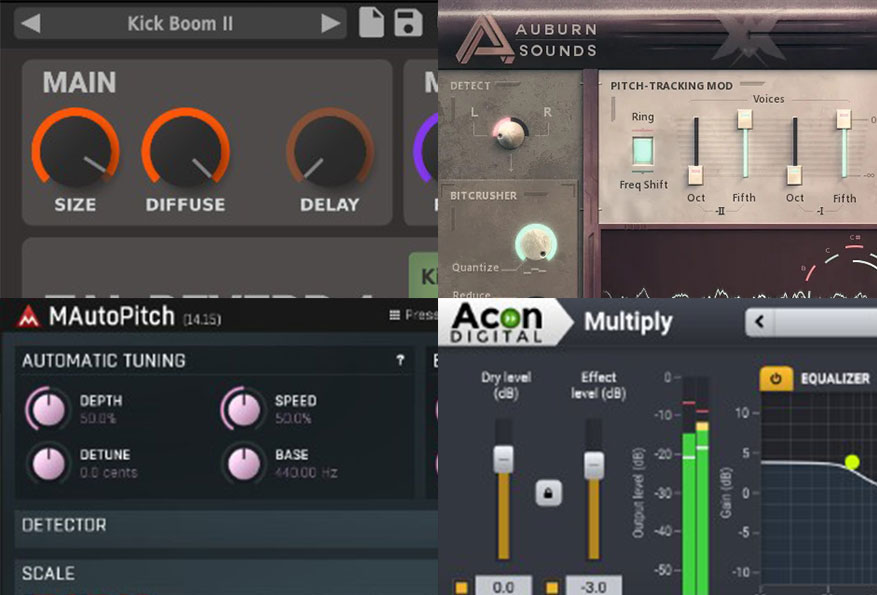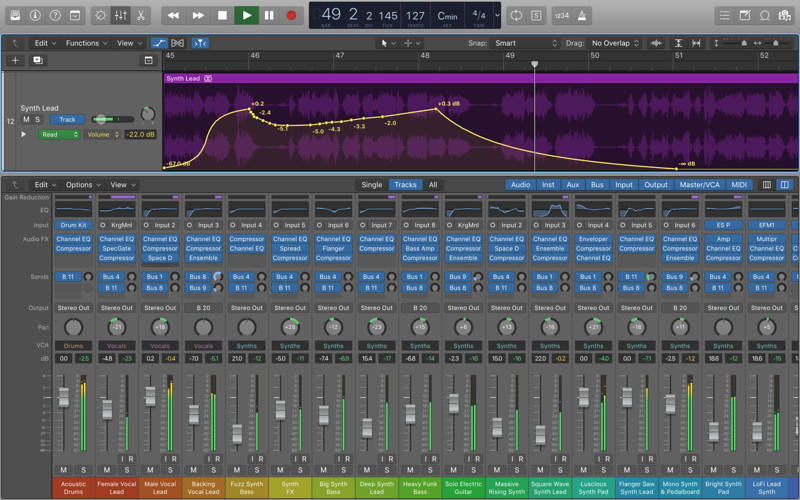

- Free au instruments for logic pro#
- Free au instruments for logic download#
- Free au instruments for logic free#
So, if you’re a Logic Pro user and you’re curious whether or not you should use the stock plugins, I think you should. Granted, there are some plugins that really need to be updated, like the Multipressor or the vocal tuning and pitch plugins, but overall there’s a lot to be impressed by. ConclusionĪlthough not all of Logic Pro X’s stock plugins are the best – the DAW offers engineers a lot of great introductory and not-so introductory options. Simply put, it’s a very impressive stock plugin that gives engineers a lot to work with. The metering is simple but intuitive, allowing you to monitor the amount of attenuation without making the metrics convoluted. If we run a 100Hz sine wave through the limiter, and then measure it with a frequency analyzer, we see that if lookahead is enabled it’s difficult to get the plugin to distort.Įach compressor also has a limiter and a distortion section.Īll of the basic functions are available as are some extras like distortion, a basic limiter, knee, and automatic makeup gain. Lookahead and true peak detection keep distortion to a minimum. What’s great about this limiter, in particular, are the lookahead and true-peak detection functions – both of which will allow you to make your master louder without introducing significant distortion to the signal.
Free au instruments for logic free#
This makes it a lot more versatile than other limiters, especially free ones. Whereas other limiters only offer an input gain and an output function, Logic Pro X’s limiter offers gain, release, output level, lookahead, true peak detection, and 2 limiting modes. Is Logic Pro X’s Limiter Any Good?Īlthough it wouldn’t be my first choice to use as a limiter, Logic Pro X offers a decent limiter.

Of course, you can make this effect even better with some other stock plugins like compressors or exciters, but we’ll cover those later on. If you’re an artist or engineer, and you have a mix that you need mastered, send it to us here:Įach amp utilizes unique settings that can be altered. We’ll also listen to examples of each plugin being used on a stereo mix (in the video embedded above) so be sure to check that out if you want audio examples to better understand these plugins. We’ll look at some of the best ones including but not limited to a limiter, an equalizer and tube equalizer, their compressor, and others. So let’s take a lot at some of the different stock plugins that you can use. In short, there are many Logic Pro X plugins that can be very useful.Īlthough some of Logic Pro X’s plugins definitely need to be updated, there are a lot of them that are great for both introductory and advanced mixing and mastering. What used to be plugins you’d only use because you didn’t have any other ones to choose from, have become decent enough to use on a more regular basis. Stock plugins don’t get much attention or praise, but they’ve really come a long way in the last few years. Are Logic Pro X Stock Plugins Any Good? – In Detail
Free au instruments for logic download#
Although you may still want to download or purchase other 2nd and 3rd party plugins, Logic Pro X Stock plugins are good and easy enough to use, to create decent mixes and masters. I read the Logic Pro X User Guide for the section about the Audio Unit Manager, and it mentions nothing about manually adding new Audio Units to the Manager that aren't already appearing.Īny help would be appreciated! I feel like there should be some easy solution out there for simply putting an Audio Unit file into a folder so it can be viewed immediately in Logic (like how effects plugins and presets work.)ĮDIT: I'm using Logic 10.2.2 on a Macbook 15-in that I got a couple months ago and is working fine.Logic Pro X Stock plugins are surprisingly good for both mixing and mastering. The Guitar Rig 5 Audio Unit did not show up. I've also gone to Macintosh HD>Library>Audio>Plug-Ins>Components, moved the Guitar Rig 5.component onto the Desktop, restarted the computer, put the component back in the "Components" folder, opened Logic Pro X.

I heard it's a 32/64bit issue or something, but I went to Macintosh HD>Applications>Logic Pro X, right-clicked and selected Get Info, but there was no checkbox for "Open in 32-bit," just a checkbox that says "Open in Low Resolution" (I tried restarting Logic after unchecking this box and the audio units didn't rescan). I have Guitar Rig 5 working on my Desktop just fine as an application, but Logic Pro X doesn't see it. I'm using lots of other AU Units from Native Instruments that work just fine, but my Guitar Rig 5 plug-in won't show up. I'm using Logic Pro X and have an AU Unit that won't show up in Logic's "Instrument" section of the inspector OR the Audio Unit Manager.


 0 kommentar(er)
0 kommentar(er)
